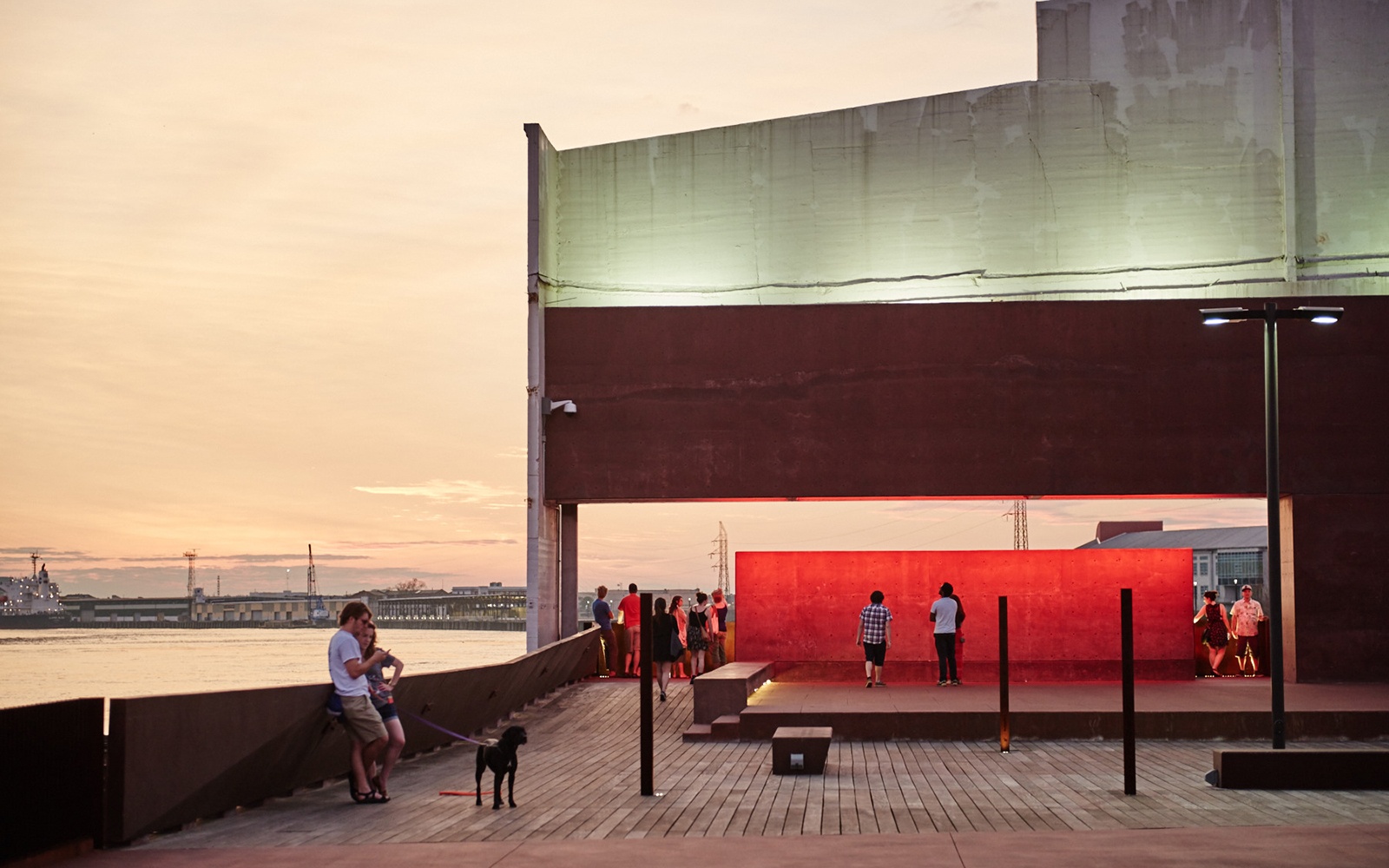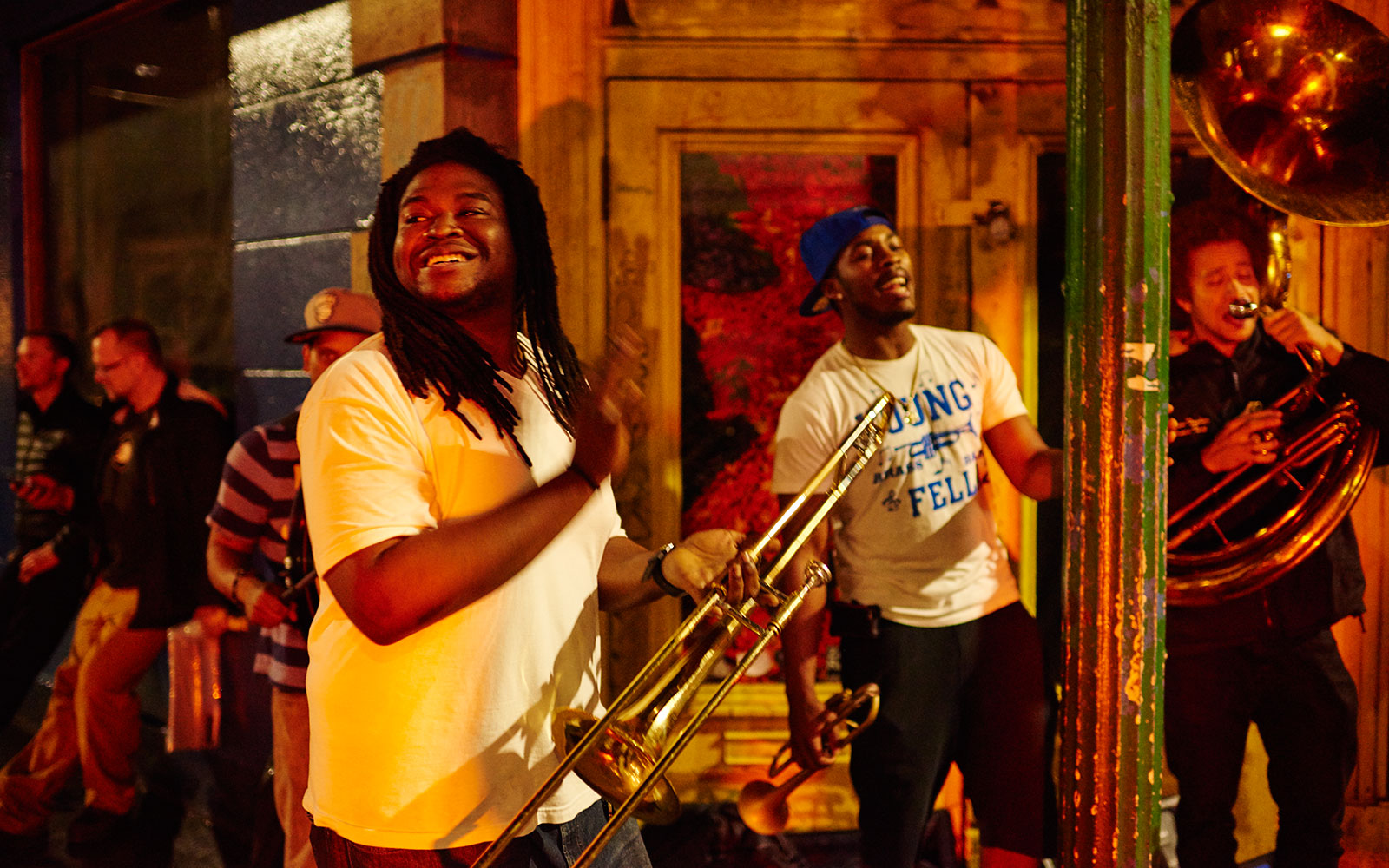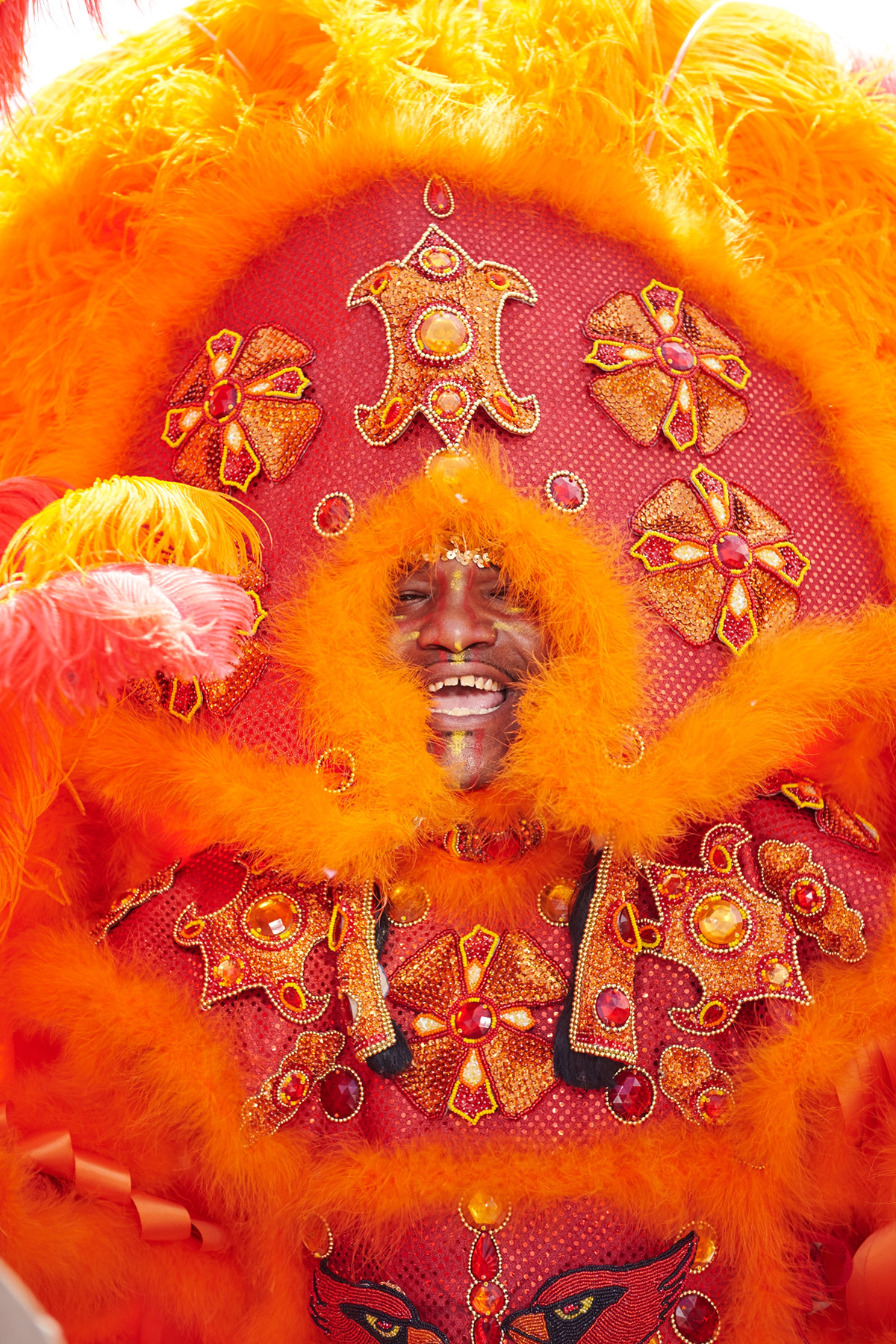
A decade after Katrina, New Orleans hasn't just rebuilt and regrouped, it’s become a new kind of place altogether—one where dreamers and doers of every stripe are bringing the city back.
The Katrina crosses can still be found all over New Orleans. They first appeared as soon as rescue teams could make their way into the city, after the 2005 hurricane and ensuing flood caused by collapsing levees. Rescue teams spray-painted the X’s on homes from Gentilly to Mid City, from Lakeview to the Lower Ninth. That graffiti told a bleak story, revealing when each house was searched, the team that searched it, and how many bodies had been found inside.
As time passed, and New Orleans began the seemingly impossible task of rebuilding itself, the crosses did not disappear. Yes, some of them were lost to bulldozers, others to speedy, determined renovations. But this is a city that has always been hell-bent on preservation—sometimes to its detriment—so it seemed perfectly normal that the crosses would become part of its multilayered historical landscape. And so, when owners applied fresh coats of color to their camelback cottages and fragile frame bungalows, they sometimes chose not to paint over the crosses, but to paint around them instead. Or to reapply the crosses, once the restoration was done. Or even to give them a more permanent life in wrought iron, affixing the 3-D version to the spot where the painted cross had once been.
New Orleans is not about to forget the nightmare that was Katrina—not that it could. Ten years out, along with the swamp tours, cemetery tours, plantation tours, French Quarter tours, food tours, riverboat tours, and haunted tours (attend a voodoo ritual!), tourists can view, for a fee, what remains of the devastation. “People want to do [those tours] and they should,” said John Pope, part of the Times-Picayune team that won two Pulitzers for its Katrina coverage in 2006.
Pope is a tall, thin, decorous man who seems born to wear a bow tie. He’d invited me to a restaurant called the Upperline, a New Orleans institution run by JoAnn Clevenger, an indomitable septuagenarian with a Gibson-girl do who has served as a muse to countless local artists (their work covers every inch of her restaurant’s walls). A classic Uptown crowd had filled the myriad rooms of the converted 1877 town house by the time we arrived; most of the patrons were white and prosperous, but also radiated, along with Clevenger, that seductive mixture of Southern gentility and florid eccentricity so unique to New Orleans. Clevenger and Pope are two of a kind, gracious survivors of something they are still trying to comprehend.
“We all came up with PTSD,” Pope tells me, reaching for a second French 75. “I still get worried when I see rain.” Like so many people from New Orleans, he cannot describe the days following Katrina without weeping. More than 1,800 people died and nearly 80 percent of the city was underwater; estimates of the damage hover at around $120 billion. The levees failed to hold back the flood, not because of heavy rain, but thanks to years of bureaucratic indifference. “People realized every level of government had let us down,” Pope explained, his eyes welling again. And so, in the wake of what he calls “the biggest most terrible transcendent event” in New Orleans’ history, its citizens decided to save their city themselves.
The view from Piety Bridge in the new Crescent Park is both hypnotic and inspiring, providing, as it does, a panoramic perspective of New Orleans old and new. The park, which opened last year, stretches along the waterfront for nearly a mile and a half, with the bridge’s soaring steel arch giving a nod to the railroad tracks below. It’s a thoroughly modern venue, accessorized with native shrubbery, hiking and biking trails, and a performing arts space carved from an aged warehouse. Crescent Park is also one of the few places in town where a visitor can actually stand along the Mississippi—there’s no levee here to block the view of the mighty river that gave birth to this port city in the 18th century. While the downtown towers gleam upriver, barges, tankers, and cruise ships parade regally by, escorted by teams of chatty gulls.
Turn around and look north—Lakeside, as they say here—and there’s the Bywater, a district that today can give any gentrifying Brooklyn neighborhood a serious run for its money. Just across Chartres Street, for instance, sits Elizabeth’s Restaurant, a neighborhood institution nestled in an adapted Victorian, adorned inside with murals painted by a local folk artist by the name of Dr. Bob. The menu is an homage to New Orleans’ Southern past and current artisanal trends: praline bacon, foie gras truffled aioli baked oysters, and a spinach salad with crispy hog jowls. Hipsters and tech-moguls-to-be hunch over their laptops, drinking Sazeracs and NOLA Hopitoulas beer. It’s a perfect spot to bear witness to a city in transition.
In fact, New Orleans has become something its citizens could scarcely imagine before 2005: a laboratory for everything from architecture to education, from food to the arts, from music to medicine—to the very nature of progress itself. Crescent Park, for instance, was designed by a global all-star team that includes George Hargreaves, Michael Maltzan, and David Adjaye, in conjunction with the New Orleans–based Eskew, Dumez & Ripple. The reconstruction of the Lower Ninth Ward was famously instigated by the Brad Pitt–sponsored Make it Right Foundation, with new homes constructed by the likes of Frank Gehry and Shigeru Ban.
The art scene, once an afterthought here, is also coming into its own. The French Quarter still has its Blue Dog tourist venues, but Prospect New Orleans, the city’s biennial, has attracted worldwide attention with some 58 artists showing at 18 venues. “A lot of the galleries have had some of their best years post-Katrina,” Ginette Bone, co-owner of the Boyd/Satellite gallery, told me. The Warehouse District, established in the 1970s as a tentative SoHo south, has now blossomed with galleries, institutions like the National World War II Museum, and restaurants to serve the boom in visitors.

Bryce Duffy
City Park, New Orleans’ sprawling answer to Central Park, was underwater during Katrina; on a recent sunny Saturday, it was brimming with life again, thanks to, among other things, the newly restored sculpture garden at the New Orleans Museum of Art. Tourists and locals vied for outdoor tables at the three-year-old outpost of the Morning Call café; the air carried the happy cries of children from the rescued Storyland, where generations of New Orleans kids have ridden in Cinderella’s pumpkin carriage and joined Pinocchio atop the famous blue whale.
Along with restoration has come reinvention. The city that once profited so much from its past has become a magnet for start-ups. Forbes labeled New Orleans the No. 1 “Brainpower City” in the U.S. last year, and has ranked it behind only San Jose and San Francisco for tech expansion— no small source of civic pride. The rate of new businesses launching here is 56 percent higher than the national average, with software, gaming, and film production companies leading the way. Major corporations like GE and the communications firm Globalstar have settled in, too. Tulane University, threatened with obliteration post-Katrina, now has a center for public service; LSU has built itself an enormous medical complex. The public school system is in the middle of a vast and radical experiment— all charter schools, all the time—that could change education in the entire United States. (In pre-Katrina 2005, 62 percent of New Orleans children went to failing schools. That number is now down to 7 percent.)
Most important, perhaps, for visitors, there are more restaurants in town now than there were before the storm. Places like Pêche and Herbsaint, along with the empire of Food Network star John Besh, have rewritten the rules of New Orleans cuisine. “There’s been a renaissance in the way people are cooking here,” Donald Link, the chef-owner of Pêche, told me, adding that New Orleans cooking can no longer be defined by standbys like shrimp creole. “We can still be a Louisiana restaurant and grow that tradition,” he explained. In other words, the best New Orleans restaurants—and the best of New Orleans, in fact—reflect the global mix that is reconstituting this city.
In fact, there is so much more to do and see today that people sometimes, under their breath, whisper that, maybe, the storm made New Orleans a better place. It’s a bitter irony, but an unavoidable one. Few would argue that New Orleans before the storm was an island of unbeatable tourist attractions surrounded by archipelagoes of atrocious poverty; it was a city riddled with crime, featured the highest incarceration rate in the country, and was hooked on municipal corruption. Tradition—good, bad or irrelevant—always trumped ambition. But then came Katrina, and suddenly, change looked like the only route to survival.
Scott Cowen, the former president of Tulane who wrote a book about his post-Katrina experience called The Inevitable City, told me, “Katrina created an obligation to rethink the future of the city and all the issues we had that we’re now seeking to improve. What’s different today is this notion of civic engagement. When we almost lost the city we all loved, people said, ‘If I don’t roll up my sleeves, nothing will get done.’ ”
So there is now Women of the Storm, a culturally, socially, and economically diverse group that essentially shamed the federal government into attending to New Orleans’ victims, as well as Citizens for 1 Greater New Orleans, which spurred reform of the city’s levee boards. But it wasn’t just the locals who were galvanized by the disaster. My lunch companions one Sunday afternoon at Pêche were Andrew Strenio and his partner, Erin Zimmer. Both are in their early thirties—he a documentary filmmaker and she a marketing executive with Good Eggs, an online delivery service that links farmers’ markets with consumers. The couple moved to the South from New York City, and Zimmer went to work for her company’s year-old New Orleans branch. Fresh-faced, ambitious, and entrepreneurial, the couple represent the new New Orleans. The city’s population is down about 100,000 people since 2005, and as predicted, many of those no longer here were poor. It now has fewer African Americans, more Latinos, and a lot more young people with college degrees.
According to Cowen, the newcomers were drawn to New Orleans just like any other tourists. “Food, music, language, and architecture have made us an iconic city,” he told me. But now, they are also “seeing employment and other opportunities they didn’t see before Katrina.” And so they’ve stayed, opening businesses, restoring homes, and learning to argue, as vociferously as the natives, about who has the best biscuits and grits in town.
By contrast, Erika Lewis has been in New Orleans for a decade. A pretty young woman with a deadpan stage demeanor, she came from upstate New York in 2005, drawn to the city’s music scene. Like a lot of musicians here, Lewis started out busking for change in the French Quarter. (Thanks in part to David Simon’s excellent depiction of post-Katrina New Orleans in Treme, there now seems to be a musician on every corner.)
Lewis quickly made friends and connections, and is now the lead singer of a group called Tuba Skinny, which plays traditional New Orleans music—spirituals, ragtime, blues, and jazz—with a modern twist, albeit one that includes a washboard player. I caught up with the band on a Friday night at a club called D.B.A. on Frenchmen Street, where their music was already inspiring more than a few couples to show off their moves.
Frenchmen is just downriver from the Quarter in another gentrifying neighborhood, the Marigny, and is the anti–Bourbon Street, a place less devoted to drinking and partying than to savoring music, whether it’s jazz, reggae or blues, Kermit Ruffins or the Ellis Marsalis quartet. “Bourbon is the place to go if you want to party in an intense way,” Lewis told me. “But people who want to take it easy and hear music go to Frenchmen.”
Of course, there are a lot more people here than there used to be, especially since Frenchmen, once obscure, is now included in so many travel guides and city bus tours. In this way, someone like Lewis is both a harbinger of change and a passionate preservationist; her work is a tribute to a bygone era, but her presence suggests that time, and New Orleans, won’t stand still.
Change—which once occurred glacially or not at all here—is now coming swiftly and furiously, and it’s impossible not to worry that the ease and authenticity of a place like Frenchmen will disappear. The same might be said of New Orleans itself. Already, the earlier waves of newcomers can be heard to complain about rising rents and home prices, as developers have moved in on onceaffordable neighborhoods like the Bywater and the Marigny. And if public housing was once a blight on some stretches of New Orleans, the destruction of those buildings to make way for new developments prompts all sorts of other questions.

Bryce Duffy
This was brought home to me most clearly the day I visited Ronald Lewis, a 63-year-old native of New Orleans who gained local fame as a designer of Mardi Gras Indian costumes, those beaded and feathered Native American–ish ensembles worn by members of old black families in various local parades. Lewis has spent his entire life in the Lower Ninth, and lost most of his memorabilia in the flood. In 2006, architecture students from the University of Kansas built him a new studio, which is the size of a freight car and crammed full of brilliantly colored headdresses, sequined high heels (they are thrown, carefully, from parade floats), books on Mardi Gras history, and even a tzedakah box for donations, a nod to Lewis’s long association with some of New Orleans’ oldest Jewish families. (He brings the brisket to the seders.)
Lewis is a stocky man but a little stooped, with weathered skin the color of chicory-laced coffee. “When we had white flight in the sixties, our family helped rebuild this city,” he said. “After Hurricane Betsy, in the sixties, people came back and rebuilt. Then with Katrina lots of people were too old to come back, or a lot of our people came home to be reburied. Every time the phone would ring, it’d be, ‘Oh, they’re bringing him back from Katrina.’ ”
Today, however, he spends time warring with antidevelopment neighbors in the Lower Ninth over a new mixed-use project to be called Holy Cross. Lewis wants the economic uplift that Holy Cross would likely bring, but some of his neighbors (old and new) don’t want the big-box stores and cookie-cutter housing that are part of the plan. “Let’s talk about how we can really rebuild this city,” Lewis told me. “We’re on life support here because of the lack of economic development.”
In the next 10 years, those kinds of arguments are likely to be heard more often in New Orleans, as the city continues to be remade. No one knows what will be lost and what will be gained in the process, and where the boundaries will be newly set between old and new. Lewis, however, knows where he stands. He’s tired of paying ever-rising prices at local stores for his Mardi Gras supplies. “Places like Jefferson Variety are killing us,” Lewis said, harrumphing at the explanation he recently got for an uptick in feather prices. “They said the ostriches had the bird flu.”